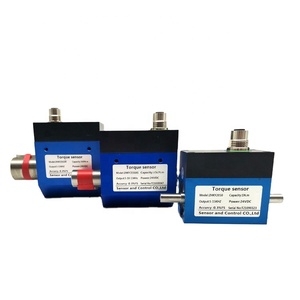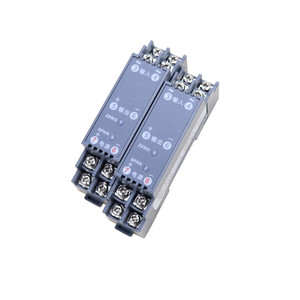
All categories
Featured selections
Trade Assurance
Buyer Central
Help Center
Get the app
Become a supplier

(1849 products available)














































current sensor frequencies are essential devices in the realm of electronics, designed to measure and monitor the flow of electrical current in various applications. These sensors are integral to ensuring the safety, efficiency, and performance of electrical systems by providing accurate current measurements. Utilizing advanced technologies, current sensor frequencies offer precise readings and are adaptable to numerous environments, making them versatile components in both industrial and consumer electronics. As the demand for energy-efficient solutions grows, the role of current sensor frequencies becomes increasingly significant in optimizing power consumption and maintaining system integrity.
The market offers a diverse range of current sensor frequencies, each tailored to specific applications and requirements. Common types include Hall Effect sensors, Rogowski coils, and shunt resistors. Hall Effect sensors are popular for their ability to measure direct and alternating currents without direct contact, making them ideal for applications where isolation is crucial. Rogowski coils, known for their flexibility and non-invasive nature, are often used in high-voltage environments to measure alternating currents. Shunt resistors, on the other hand, provide high accuracy in low-voltage applications by measuring the voltage drop across the resistor. Each type of current sensor frequencies is designed to meet distinct technical demands, ensuring reliable performance in various settings.
current sensor frequencies play a critical role in electrical systems by providing real-time monitoring and diagnostics. These sensors enable the detection of abnormalities such as overloads and short circuits, thereby preventing potential damage and ensuring operational safety. Key features include high sensitivity, fast response times, and robust construction, which enhance their functionality in demanding environments. Additionally, many current sensor frequencies incorporate digital interfaces for seamless integration into smart systems, allowing for remote monitoring and control. The ability to provide accurate and continuous current measurements makes current sensor frequencies indispensable in modern electrical applications, from renewable energy systems to automotive electronics.
The construction of current sensor frequencies involves the use of specialized materials and components to ensure durability and precision. Typically, these sensors are constructed using high-grade metals and semiconductors, which provide the necessary conductivity and sensitivity. For instance, Hall Effect sensors utilize semiconductor materials to detect magnetic fields, while Rogowski coils are made from flexible copper wire to accommodate various shapes and sizes. The choice of materials impacts the sensor's performance, accuracy, and longevity, allowing manufacturers to customize current sensor frequencies for specific applications. As technological advancements continue, the development of more resilient and efficient materials enhances the capabilities of current sensor frequencies, offering improved functionality and reliability.
Integrating current sensor frequencies into electrical systems requires careful consideration of the application's requirements and the sensor's specifications. These sensors are utilized in a wide array of industries, from automotive and aerospace to renewable energy and consumer electronics. To achieve optimal performance, it is essential to select current sensor frequencies that match the system's voltage and current ratings, ensuring compatibility and accuracy. Installation involves connecting the sensor to the circuit, often through soldering or using connectors, and calibrating the device to provide precise measurements. Proper integration of current sensor frequencies not only enhances system efficiency but also contributes to energy conservation and safety, making them vital components in the pursuit of sustainable technology solutions.
When selecting current sensor frequencies, it's crucial to consider the specific requirements of your application. Factors such as the type of current to be measured, the environment in which the sensor will operate, and the required accuracy all play a vital role. For instance, Hall Effect sensors are ideal for applications requiring non-contact measurement, while shunt resistors provide high precision in low-voltage environments. Understanding these nuances helps ensure that the chosen current sensor frequencies meets the technical demands of the application, leading to optimal performance and reliability.
Another key consideration is the sensor's compatibility with existing systems. It's important to evaluate the voltage and current ratings to ensure that the current sensor frequencies can handle the electrical load without risk of damage. Additionally, integration ease should be assessed, considering whether the sensor can be easily connected and calibrated within the system. This ensures seamless operation and avoids potential disruptions in the system's functionality. Selecting the right current sensor frequencies not only enhances system efficiency but also contributes to energy conservation and safety.
When choosing current sensor frequencies, consider the type of current (AC, DC, or both) it needs to measure, the required accuracy, and the environmental conditions. The sensor's compatibility with existing systems and its ability to integrate seamlessly are also important factors.
In renewable energy systems, current sensor frequencies monitor the flow of electricity generated by sources like solar panels or wind turbines. They help optimize energy distribution and ensure that the system operates efficiently by detecting any irregularities in current flow.
Yes, certain types of current sensor frequencies, such as Rogowski coils, are specifically designed for high-voltage applications. These sensors provide non-invasive measurements, making them suitable for environments where electrical isolation is critical.
Digital current sensor frequencies offer several benefits, including improved accuracy and ease of integration into smart systems. They often come with digital interfaces that allow for remote monitoring and control, enhancing the overall functionality of the system.
Maintaining current sensor frequencies involves regular inspection for physical damage and ensuring that connections are secure. Calibration should be performed periodically to maintain accuracy, often using calibration equipment or reference standards to adjust the sensor's output.